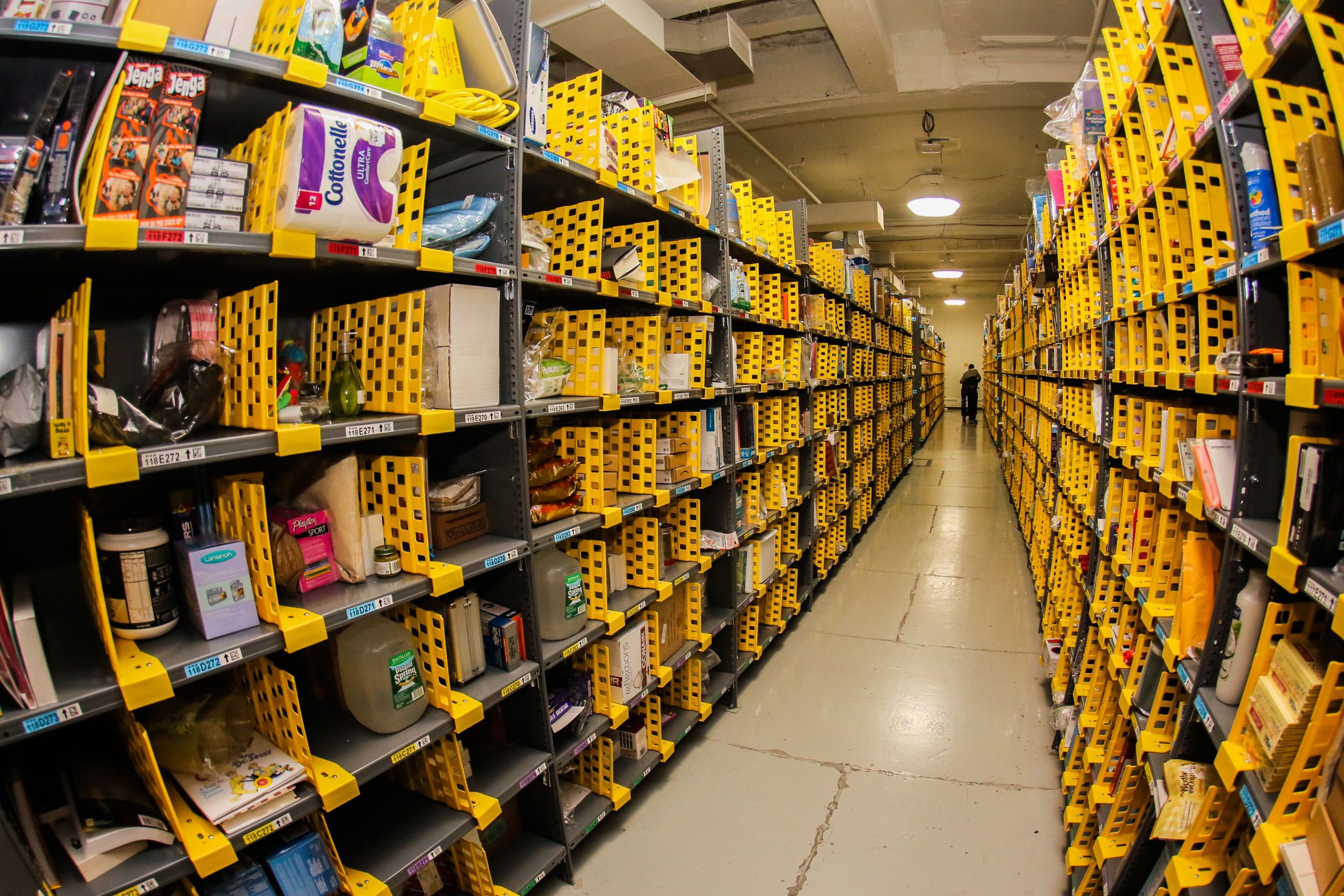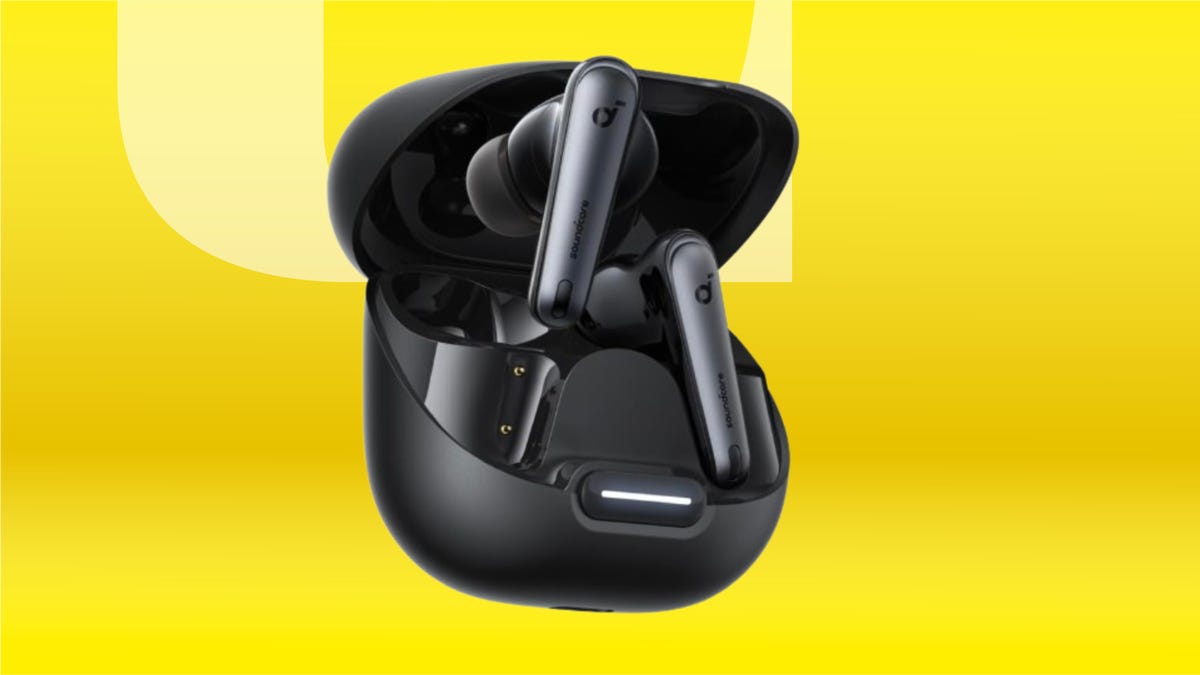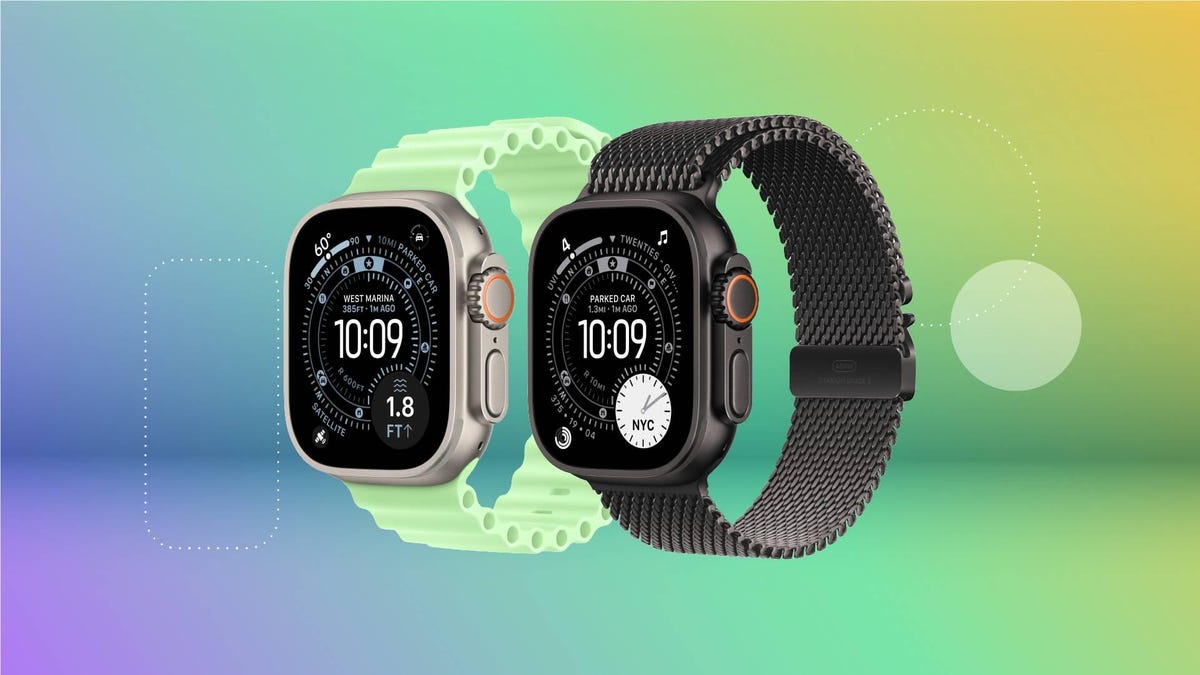Technologies
This Amazon trick will save you money before Black Friday. What to know
Prime members still get free two-day shipping and returns with this money-saving tip. Here’s how it works.

Amazon just announced «Black Friday-worthy deals.» You may save up to 50% on select items ahead of the holidays and Black Friday. The deals are coming in close competition with Target’s Deal Days that will start next week. hauls can add up quickly. But there’s one way to save money ahead of holiday shopping.
Amazon has a hidden gem that helps you save on computers, video games and even some of the latest Amazon devices. And Prime members can get extra savings on select items and services throughout the year. You’ll get the best deals a few ways (we’ll show you how) but it all boils down to being open brands beyond the big names.
We’ll show you the ins and outs of Amazon Warehouse Deals and how to score the best savings since Amazon’s gotten quite good at hiding stuff. Once you learn how to navigate the site, you’ll never want to pay full price again. And here’s the rundown of everything Amazon announced so you can keep an eye on savings for these new items, too.
Look for the Amazon Warehouse Deals page
I begin nearly all of my Amazon searches on the Amazon Warehouse Deals landing page, because it cuts out full-price listings almost entirely so you mostly just see the discounted items (I’ll explain the one exception shortly). To get there, open Amazon using either a desktop browser or the Amazon mobile app and search for «Amazon warehouse» or «warehouse deals.»
Rather than getting a list of search results like normal, you should see a screen that looks a lot like the main Amazon search page, with a search bar, categories and so on. From there you can browse categories like Computers & Tablets, Kitchen or Home Improvement (click these and other links in this story to see actual, current Warehouse Deals listings) or you can search for more specific items just like you would on the regular Amazon homepage, except the results will be discounted, sometimes heavily.
This quick and easy approach works best if you’re not in the market for something in particular — say you’re just looking for gift ideas or killing time during your lunch break. It can be a lot of fun to scroll through the various categories looking for stuff that pops out at you. If you’re shopping for something more specific, however, keep reading for pro tips on how to find it discounted using Amazon Warehouse Deals.
Why Amazon Warehouse stuff is so cheap
Just like other major retailers such as Walmart or Target, Amazon takes in a lot of customer returns, which it can no longer sell as new-in-box, regardless of why the buyer sent the item back or whether it’s even been opened.
That’s why everything Amazon Warehouse sells is listed as used, even if the product itself has never been touched. Regardless of its condition, used stuff is just worth less — sometimes a lot less. And that’s good for you.
Amazon Warehouse Deals work for almost anything
Everything I’ve shown you so far works great so long as you’re a little flexible about what you’re looking for. If, on the other hand, you’re shopping for something really specific — like, say, an Otterbox case for your iPhone 12 ($829 at Amazon) — it can be frustrating to limit your search to just Warehouse Deals listings. You might turn up nothing at all relevant.
Whenever you head to Amazon to buy an exact product, go ahead and search for it just like you would otherwise. There’s a way to check and see if a discounted Warehouse Deals version is available from any Amazon listing.
First, pull up the item you want to buy just as you normally would on Amazon, but don’t add it to your cart just yet. Scour the page, keeping your eyes peeled for words like «New & Used,» «Buy Used,» «New & Used Offers» or just plain «Used.»
Usually there’ll be a price listed, too, representing the cheapest option available (but not including tax or shipping costs). If you’re not having any luck finding the link and you’re on a computer, try using your browser’s «find» function (usually Control-F on Windows PCs and Command-F on Macs) to look for these keywords.
Once you locate the link, look for items with «Amazon Warehouse» listed as the seller and an Amazon Prime logo displayed near the price. If Amazon Warehouse has more than one of the same item in stock, there will sometimes be a separate listing for each, especially if the items are in different conditions.
Be careful of Amazon’s redirecting trick
Another thing to keep an eye on — make sure you always go back to the Amazon Warehouse Deals splash page before starting a different search. Otherwise, if you just search for another item from the search bar at the top of the page, Amazon might bounce you out of Warehouse Deals and into the full site.
Same goes for «recent searches.» If you searched for, say, «bunny slippers» across all of Amazon, then went to Warehouse Deals and searched for «banana slippers,» then decided you definitely want bunnies over bananas, don’t select «bunny slippers» from the drop-down menu that appears when you select the search bar. Those recent searches will search not just the same terms but the same Amazon sections as the original search. In other words, it’ll yank you out of Warehouse Deals and back to the land of full-price slippers. Instead, type the search in again on the Amazon Warehouse Deals main page.
You’ll find the best deals if you’re not loyal to one brand
Say you’ve been thinking about getting a new cordless drill for a while. You don’t care who makes it, you just don’t want to spend a lot of money. Or a new dog leash, robot vacuum, whatever. You’re not brand-loyal, just cost-conscious. That’s the perfect time to search from inside Amazon Warehouse Deals.
Do it just like you would on the full Amazon site — type your search terms in the dialog box, then select «Search.» Searching from the Warehouse Deals main page, your results won’t be cluttered with a bunch of full-price listings.
Except for one caveat: Amazon’s «sponsored» listings. Unless you have an ad blocker that specifically removes Amazon’s paid listing results (I love the Amazon Ad Blocker Chrome extension), you’ll still see full-priced items peppered among the discounts. These undiscounted listings look almost identical to Warehouse Deals, except they’re labeled «Sponsored.» Sneaky, I know, but that’s why I’m warning you.
How Amazon Warehouse returns work
Of the dozens (if not hundreds) of Amazon Warehouse listings I’ve bought over the years, I only ever ran into problems with a handful of them — a Bluetooth adapter for my car that would randomly shut off, a wireless router that didn’t broadcast any signal, a very well-worn puppy harness with dog hair stuck to it; stuff like that.
Whenever that happens, I just return the item like I would any defective product, then order another one. Sure, it’s a bit more hassle, but considering the hundreds, if not thousands of dollars I’ve saved over the years this way, it’s worth the extra effort.
Truth is, most Amazon Warehouse items are in perfect working order — many haven’t even been so much as pulled out of their packages yet, like the Ring 2 Doorbell I got for $65 (it retailed for $139) or the Baby Trend stroller I paid $81 for instead of $110. Even for stuff that has been taken out of the box, Amazon puts everything through what the company calls a «rigorous 20-point inspection process,» after which each item is given a quality grade and priced accordingly.
Some items may have cosmetic damage or be missing parts, accessories, instructions or assembly tools, but Amazon will detail any damage to the product or packaging, as well as any missing element along with the condition, so you won’t be surprised. For example, I knew when I ordered a 100-watt Pyle amplifier for $29 that the accessories were loose and the amp would come repackaged. Who cares? I saved close to $15.
What the different Amazon grades mean
Amazon has five different grades it assigns to items it resells. Here they are with brief explanations of what Amazon means by them.
Renewed: This is the highest grade an Amazon Warehouse item can receive and is on par with what other companies might call «refurbished.» Renewed items have been closely inspected and tested and determined to look and function like new and come with a 90-day replacement or refund guarantee. The «refreshed» Roku Express Plus I ordered had never even been opened.
Used, Like New: No noticeable blemishes or marks on the item itself, although the packaging may be damaged, incomplete or missing altogether. All accessories are included, and any damage to the package will be described in the listing. The box for the Like New Evenflo locking gate I saved $6 on was a little banged up, but I’ve seen way worse on Walmart’s shelves. The gate itself was flawless.
Used, Very Good: The item has been lightly used, with minor visible indications of wear and tear, but is otherwise in good working order. Packaging might be damaged, incomplete or the item repackaged. Any missing accessories will be mentioned in the listing. I saved $4 on a Very Good Bosch Icon wiper blade that had, like, one scuff on it.
Used, Good: Item shows moderate signs of use, packaging may be damaged or the item repackaged and it could be missing accessories, instructions or assembly tools. Another Bosch Icon wiper blade I got was only in Good shape, but I saved $15 on that one, and honestly I can’t tell one from the other now that they’re on my car.
Used, Acceptable: Very well-worn, but still fully functional. Major cosmetic defects, packaging issues and/or missing parts, accessories, instructions or tools. I got an Echo Dot for $23 that was considered Acceptable. I think it has a scratch near the power port, but now it’s on my nightstand, where it does its job well, and mostly in the dark, for less than half the cost of a new one.
How to choose the right quality grade
If there are multiple listings with different grades available for the product I want to buy, I think about what I’m going to use it for. If it’s something purely functional and I couldn’t care less about its cosmetic condition, like hair clippers or a cordless drill, I’d go with the cheapest option, period.
If it’s something I’d display, like a kitchen mixer, end table or wall clock, I read the descriptions a little more closely and look for items that are rated Very Good or Like New.
But honestly, a low-nough price on just about anything can woo me into putting up with some scratches or scuffs. Not to mention that in my experience Amazon tends to err on the side of caution, marking items as Good or Acceptable that the average person would consider Very Good or Like New.
Beware, you may not have a warranty with your Warehouse Deal
One of the benefits of purchases made through Amazon Warehouse is that Amazon’s standard 30-day replacement or refund return policy applies, which comes in handy if you wind up with a lemon. Amazon does caution that because these products are considered used they don’t come with the manufacturer’s original warranty.
That said, if the product hasn’t already been registered in someone else’s name, there’s a decent chance any issues you run into past Amazon’s 30-day window can be resolved with a call to the manufacturer.
Amazon Prime members still get free shipping
Subscribing to Amazon Prime won’t get you a bigger discount on Amazon Warehouse Deals, but you’ll get free shipping just as you would for any other Prime-eligible item, which is why I still pay for Prime even though most of my purchases come from Amazon Warehouse.
Most of the stuff I’ve bought through Amazon Warehouse ships and arrives within the same one- to two-day window I get with new items, although some orders do take longer to fulfill. If that’s the case, the extra handling time is usually indicated on the listing, so I know what to expect.
Quick tips about buying from third-party sellers
While wading around in the listings looking for Amazon Warehouse Deals you may have discovered even more discounted listings not sold by Amazon. What you’ve stumbled upon are items sold by third-party retailers whose only relationship with Amazon is that their items are for sale on Amazon’s marketplace, much like eBay.
Amazon’s buyer protections lag considerably behind eBay’s, however. eBay guarantees customers their money back in the event of a dispute, and although Amazon will ultimately do the same, its process is a bit more convoluted, so proceed with caution. Generally, if I can’t find a good enough deal on Amazon Warehouse, I’ll tab over to eBay and look for the item there instead. eBay is a little more transparent about both its vendors and the merchandise they sell. If I’m going to buy garage-sale used as opposed to Amazon’s never-opened used, I prefer eBay.
Technologies
These Anker Earbuds Are Down to $57 — and Even Amazon Couldn’t Resist Matching the Price
Grab yourself a solid pair of earphones that offer excellent noise cancellation and battery life.

There are plenty of earbud options out there, but finding the right ones for you can feel nearly impossible as a result. But if you’re after some of the best noise-canceling wireless earbuds and you’d like to save some money, we might have the answer for you.
Best Buy is running a one-day sale on the excellent Anker Soundcore Liberty 4 NC earbuds, knocking the price to just $57 — which matches the lowest price we’ve seen yet. And Amazon’s price-matching. With a 43% discount, now’s the time to grab a pair before this limited-time deal disappears.
These earbuds have 11mm drivers, as well as hi-res wireless, LDAC technology and adaptive noise canceling that should reduce noise from your environment by up to 98.5%, according to Anker. That means you can stay immersed in the music (or other content you love) regardless of what’s going on around you.
Plus, because they’re equipped with six mics, they offer good call quality, regardless of your environment. We found them comfortable, too, and loved the bass they put out.
Hey, did you know? CNET Deals texts are free, easy and save you money.
The Liberty 4 NC earbuds have an impressive battery life as well, offering up to 10 hours of playback per charge, with an additional 50 hours available with the charging case. And just 10 minutes of fast charging can get you up to four hours of playback. They’re also rated IPX4 water-resistant, so any inclement weather while you’re out shouldn’t cause these buds any harm.
Another great feature these earbuds offer is multipoint connection, which lets you connect to your phone and your computer at once, which is super convenient. That’s a lot of features for earbuds this affordable.
If you’re not totally sold on this model, be sure to check out our roundup of all the best headphone and earbuds deals happening now.
HEADPHONE DEALS OF THE WEEK
-
$300 (save $51)
-
$299 (save $151)
-
$220 (save $180)
Why this deal matters
These excellent earbuds are now available at their record-low price. Best Buy is limiting this discount to a one-day sale, and we expect Amazon to end the deal around the same time, so be sure to grab a pair before this opportunity expires.
Join Our Daily Deals Text Group!
Get hand-picked deals from CNET shopping experts straight to your phone.
By signing up, you confirm you are 16+ and agree to receive recurring marketing messages at the phone number provided. Consent is not a condition of purchase. Reply STOP to unsubscribe. Msg & data rates may apply. View our Privacy Policy and Terms of Use.
Technologies
The Apple Watch Ultra 3 Just Got Its First Proper Discount, but It Won’t Last Long
The latest rugged smartwatch from Apple is yours for just $700 right now.

The Apple Watch Ultra 3 has only been on sale for a few weeks, but it’s already available for its first real discount. Getting one of the best smartwatches money can buy isn’t going to be cheap, but this deal saves you $99 off the usual asking price. But be warned, we don’t expect this early Black Friday deal to last long.
The result? You’ll pay just $700 for your new Apple Watch Ultra 3, with a couple of colors and band combinations available. These prices often fluctuate, so we suggest checking out all available pairings before placing your order. Apple Watch Ultra 3 deals are likely to come and go quickly.
All Apple Watch Ultra 3 models come with cellular modems inside so you can connect them to your carrier — assuming it supports the Apple Watch’s eSIM. That’ll allow you to stay connected even when you don’t have your iPhone with you.
Hey, did you know? CNET Deals texts are free, easy and save you money.
The Apple Watch Ultra 3 comes in a large 49mm size, so it’s easy to read. Despite that huge display, Apple Watch Ultra 3 owners can expect long-lasting battery life. In fact, the Apple Watch Ultra 3 can run for up to 42 hours in normal mode and a whopping 72 hours in its low-power mode.
This being an Apple Watch, it comes with all of the usual health and fitness monitoring features, as well as sleep tracking. It can monitor your heart rate, track your progress thanks to its precise dual-frequency GPS, and do a whole lot more.
If the standard Apple Watch models can’t quite live up to your busy, active lifestyle, this is the model for you. Be sure to order your new smartwatch before this deal expires.
SMARTWATCH DEALS OF THE WEEK
-
$329 (save $100)
-
$200 (save $100)
-
$200 (save $100)
-
$500 (save $150)
Why this deal matters
The latest Apple Watch Ultra 3 is the best of its kind. It has a new display that’s designed to be easier to read and has an impressive battery life. It isn’t the cheapest smartwatch on the market, but if you want the best that Apple has to offer, now is the time to place your order — before this deal ends.
Looking for savings on other models? Check out all the best Apple Watch deals happening now.
Join Our Daily Deals Text Group!
Get hand-picked deals from CNET shopping experts straight to your phone.
By signing up, you confirm you are 16+ and agree to receive recurring marketing messages at the phone number provided. Consent is not a condition of purchase. Reply STOP to unsubscribe. Msg & data rates may apply. View our Privacy Policy and Terms of Use.
Technologies
Here’s the Best Time to Spot November’s Supermoon, the Brightest Moon of 2025
Does the moon look brighter and bigger? It’s not just you — here’s why this month’s supermoon is even more super.

November is a great month for skygazers, featuring a trio of meteor showers and the return of the northern hemisphere winter constellations. This week, it also features the second of four consecutive supermoons. This month’s supermoon will happen on Nov. 4-5, and November’s beaver moon is special because it’ll be the brightest full moon of 2025.
Don’t miss any of our unbiased tech content and lab-based reviews. Add CNET as a preferred Google source.
In addition to being a supermoon, November’s full moon is known as the beaver moon. There is some debate as to why it was named this way. Some believe that this was the best time of year in the old days to set beaver traps to get pelts for winter clothing. Others believe that it coincides with the busiest part of the year for beavers, who are now stocking their lodges with supplies for the upcoming winter.
The brightest supermoon: When’s the best time to see it?
The moon will reach peak illumination at 8:19 a.m. ET on Nov. 5, making the evening of Nov. 4 and the morning of Nov. 5 the best times to view the moon.
Since moon phases shift slowly, the moon will appear almost full for nearly a week. If you are unable to view the full moon on its best night due to weather or other reasons, you can still see a mostly full moon at any point from Nov. 3 to Nov. 8.
For all of those days, the moon will be measurably brighter in the night sky compared to any other full moon in 2025. The reason for this is because of the moon’s elliptical orbit. Since it’s not a perfect circle, the moon’s 27.3-day journey around the Earth brings it closer to us on some days, a phenomenon known as perigee. If there is a full moon during this time, it’s branded as a «perigean full moon,» which you may know better as a supermoon.
Not all supermoons are equal, and November’s will be a little more special than others. According to The Farmer’s Almanac, the beaver moon will be a scant 221,817 miles away from Earth, making it the closest full moon of the year. That means it’ll be the biggest and brightest of the year.
In practice, the differences are fairly minor and likely won’t be visible to the naked eye when compared side by side to other supermoons. A supermoon is only about 7% larger than a regular full moon. According to NASA, the biggest difference is when comparing a supermoon to a micromoon, where a supermoon will be about 14% larger and 30% brighter. So, if you notice that your backyard patio is lit up more than usual, it’s because of the supermoon.
Also due to the moon’s orbit, November will also bring a micro new moon, which means the moon will be as far away from the Earth as it can get — a phenomenon known as apogee. November’s new moon occurs on Nov. 20, but you won’t be able to see it.
-

 Technologies3 года ago
Technologies3 года agoTech Companies Need to Be Held Accountable for Security, Experts Say
-

 Technologies3 года ago
Technologies3 года agoBest Handheld Game Console in 2023
-

 Technologies3 года ago
Technologies3 года agoTighten Up Your VR Game With the Best Head Straps for Quest 2
-

 Technologies4 года ago
Technologies4 года agoVerum, Wickr and Threema: next generation secured messengers
-

 Technologies4 года ago
Technologies4 года agoBlack Friday 2021: The best deals on TVs, headphones, kitchenware, and more
-

 Technologies4 года ago
Technologies4 года agoGoogle to require vaccinations as Silicon Valley rethinks return-to-office policies
-

 Technologies4 года ago
Technologies4 года agoOlivia Harlan Dekker for Verum Messenger
-

 Technologies4 года ago
Technologies4 года agoiPhone 13 event: How to watch Apple’s big announcement tomorrow
